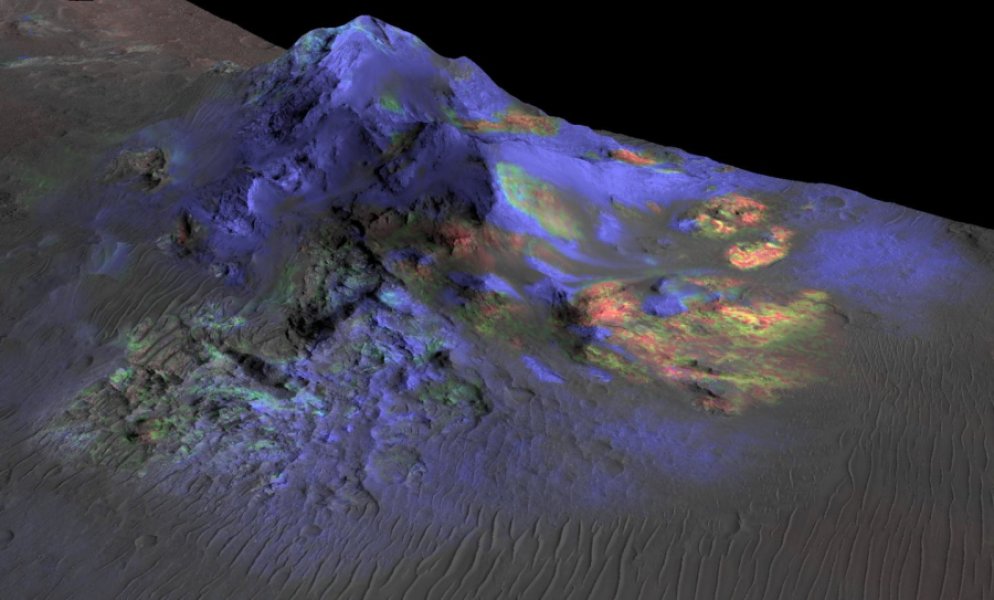Glass found in Mars craters that could capture ancient microorganisms

Researchers found on Mars signs that meteorite impact craters contain glass formed from sand under the influence of high pressure and temperatures. Such glass, as has already been proved in studies on the surface of the Earth, can preserve the microscopic life forms that existed at the time of the meteorite’s fall.
The presence of water on Mars has already been proven by science . There are beds of dried up rivers and caps of water ice (on which carbon dioxide periodically freezes). But we still can’t find any evidence of life on the red planet. Only indirect evidence, such as the presence of favorable conditions or the presence of a local hydrocarbon . Is it that those bacteria that settle therebrought along Curiosity .
Now life on the planet may not exist at all, but it could have been earlier - when there was more water, for example. The planetologist Peter Schulz, who recently explained the existence of turbulences on the moon , made the assumption that on Mars nothing prevented the formation of the same glass that was found in the craters of the Earth. And if so, then it is in it that, like flies in amber, ancient Martian bacteria, or at least traces of microorganisms, can be stored.
Scientists from Brown University, inspired by this assumption, began an active search for glass on Mars - and before them no one had achieved success in this. A thorough spectral analysis of the light reflected from areas of the surface of the light helped them find several craters where the glass was formed. The work was led by Kevin Canon, a university student. He was assisted by Professor Jack Mastad.
“Glass formations do not produce particularly prominent spectrograms, so they are usually drowned out by the spectrum of minerals that are on them,” says Mastad. “But Kevin came up with a way to get their signal out of the general noise.”
Scientists in the laboratory “baked” a glass similar in composition, found out what kind of spectrogram it should have, and transferred this data to an algorithm specially designed to disassemble the spectra obtained by the Compact Reconnaissance Imaging Spectrometer for Mars (CRISM), which is located on board the orbital station Mars Reconnaissance Orbiter .
This technique made it possible to detect traces of glass formed as a result of meteorite impacts in several craters of Mars. One of the craters is the Hargraves, located in the Nili Fossae Basin .stretching for 600 km on the surface of the planet. It will just be one of the possible places where the next NASA rover will land, the mission of which is planned for 2020. This rover will have to get soil samples that scientists plan to deliver back to Earth.
